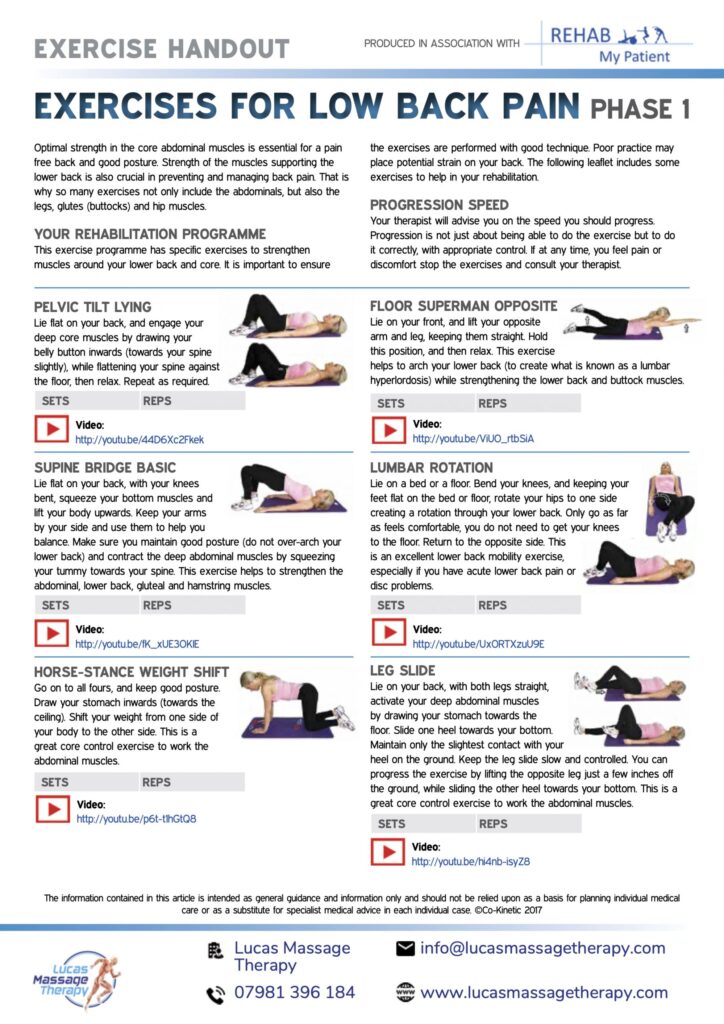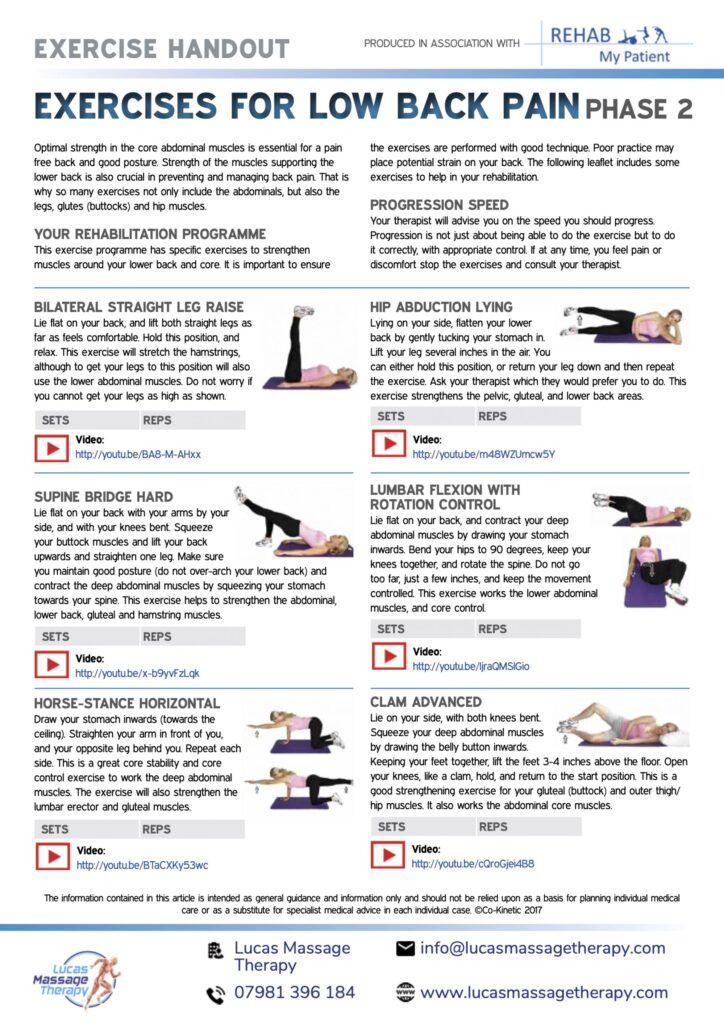
Lower Back Pain Massage Treatment in Watford, St Albans, Hemel Hempstead, Abbots Langley
Life can be hectic! Nowadays our lives are very busy, but often sedentary, which causes tight muscles, poor posture and restrictive movement. If left untreated, this everyday ache and pain can turn into bigger problems, such as injuries or chronic pain.
But it doesn’t have to be that way. I can help!
Book nowHow will Lower Back Pain Treatment in Watford help you?
You might need a lower back massage to treat muscle tightness or acute and chronic pain in the lower back such as sciatica, muscle strain of the back, ligament sprain of the back, slipped disc or disc bulge. Lower back pain treatment combines sports massage techniques, to release unwanted muscle tension and enhance your body’s healing process. Take care of your body now. Lower Back Pain Treatment in WatfordBook your appointment with Lucas Massage Therapy.
How do you fix lower back pain?
Lower back massage provides substantial healing and pain relief for many lower back pain problems. Specifically, for pain caused by a back strain. A back massage focuses on muscles including the quadratus lumborum, latissimus dorsi and the erector spinae, located around the spine. Pain in the lower back can be caused by many different reasons. One of the reasons for lower back pain is muscle tightness or poor posture.
Back massage has lots of benefits for muscles in the back. It helps warm up muscles and increase blood and lymphatic circulation. It encourages more healthy nutrients to be passed around the body and more toxins to be removed. A lower back massage uses a variety of different techniques to help treat a range of injuries. Who is the best person to treat lower back pain? Our sports massage therapist at Lucas Massage Therapy uses lower back massage in Watford to help you improve flexibility, and reduce pain, tension and tightness of the muscles.
NO MORE LIVING WITH PAIN

How will lower back massage help you with post-surgery?
Surgery can leave damaging effects on the body. Muscles become restrictive and unable to move properly resulting in muscle tightness and tension. Muscle tightness and tension can create pain and discomfort.
A lower back massage aims to help the effects of surgery by relieving muscle tightness and stimulating the lymphatic system.
A lower back massage increases the temperature of the muscles. Temperature is increased as blood circulation improves. Increasing the temperature of the muscles improves tissue elasticity. When tissues become inelastic, they can cause restriction in movement and increased pain. Improving tissue elasticity reduces restriction and relieves muscle tightness to help reduce pain.
When muscles are restricted in movement, lymphatic circulation tends to become less efficient. A less efficient lymphatic system means that an increase in metabolic wastes can build up in the muscles, contributing to muscular fatigue and pain. A lower back massage can stimulate the lymphatic system. Stimulating the lymphatic system increases the rate of metabolic wastes being removed through lymph flow and out of the body at the glands. A more efficient lymphatic system can increase healing, decrease recovery time and decrease pain.
How will Sports Massage Watford help you with acute pain?
Acute pain can be released through a sports massage. When a signal is sent from the brain to the nerves in the body, acute pain occurs. Telling them to create pain.
A sports massage aims to reduce pain by decreasing muscle tightness, disturbing the signal sent to the brain and improving tissue elasticity.
The signal sent to the brain from the receptors in the skin can be disturbed by the sports massage. When friction is created between the fingers and skin during a massage, it sends a new signal to the brain. It means that the nerves do not receive the message to cause pain.
Muscle tightness and tension are relieved as tissue elasticity is improved. As the temperature of the muscles is increased, tissue elasticity is improved. Tissue elasticity is improved as it becomes looser and able to stretch further without restriction. Improving tissue elasticity therefore reduces pain.
How will Sports Massage Watford help you with tight muscles?
A sports massage can help relieve tight muscles. Muscle tightness is most commonly caused by poor posture, overuse and injury. If not treated, muscle tightness can be restrictive and painful.
A sports massage aims to reduce muscle tightness by improving tissue elasticity.
During a massage, the skin and fingers create friction. When friction is created, an increase in blood circulation is encouraged. Increasing blood circulation increases muscle temperature. When muscle temperature is increased, tissue elasticity and flexibility are improved. An improvement in tissue elasticity and flexibility decreases muscle tightness, reducing restriction and pain.

What are the benefits of a lower back massage?
Various benefits can be gained through lower back massage. The benefits of a lower back massage include:
- Increased range of movement
- Improved blood circulation
- Decreased pain
- Breakdown of scar tissue
- Released muscle tension
- Maintainance of healthy muscles
Exercises for low back pain


How can I arrange a lower back massage in Watford?
The easiest way to arrange a lower back pain treatment in Watford with us at Lucas Massage Therapy is to book it online.
Deep Tissue Massage and Sports Massage for back pain St Albans, Hemel Hempstead, Watford, Abbots Langley and Kings Langley.

